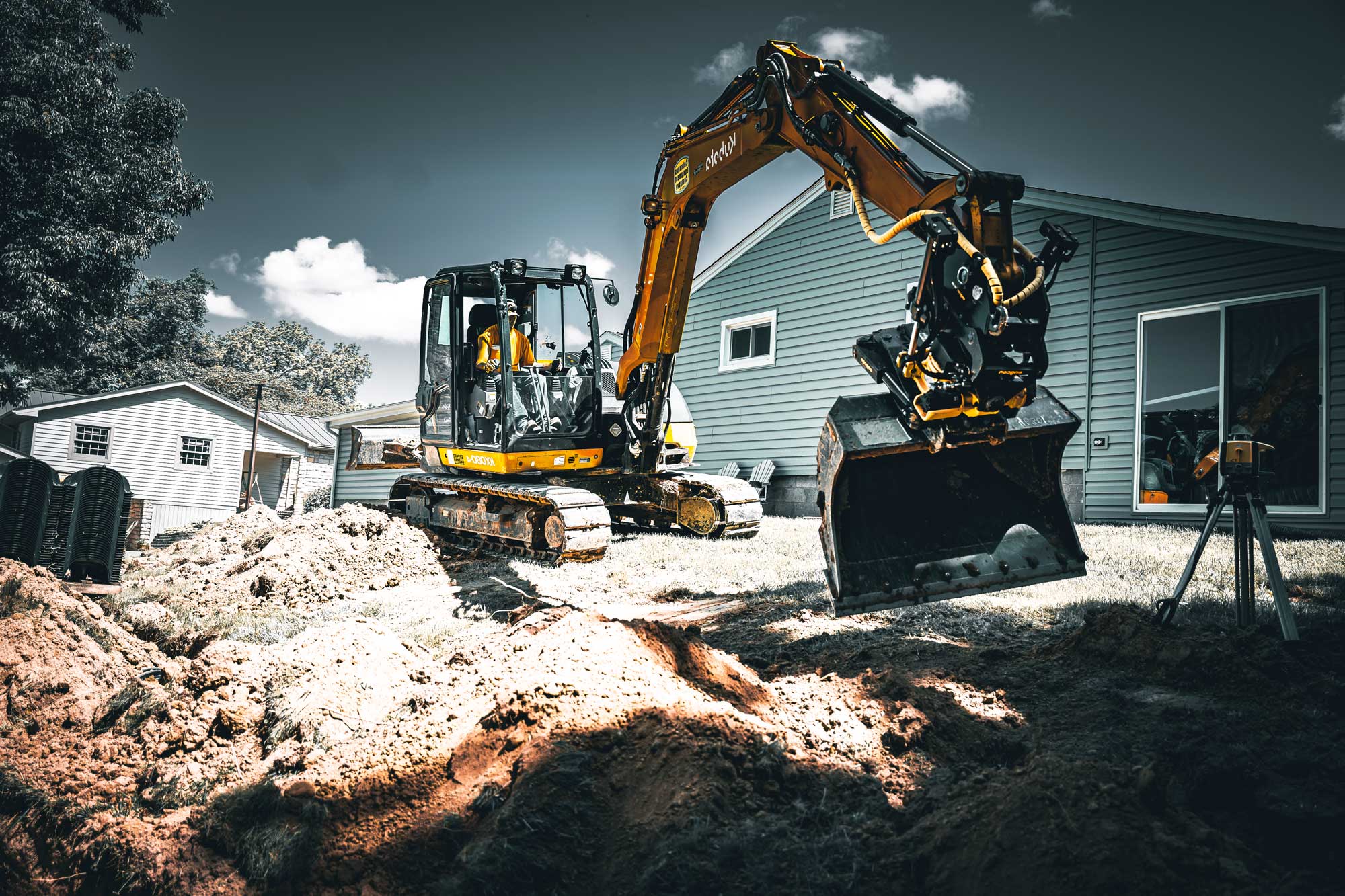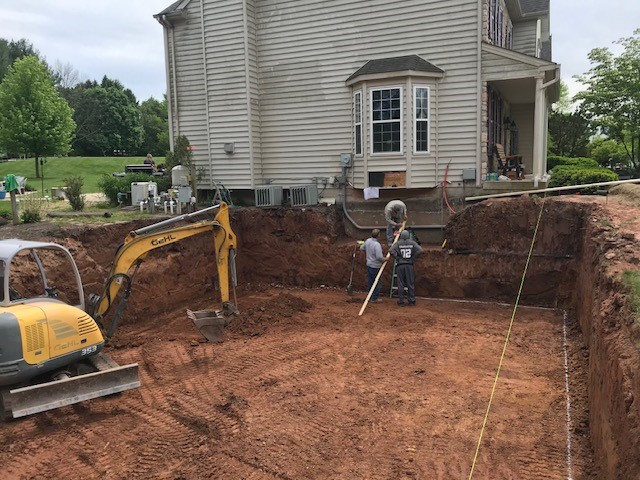Professional Septic Ohio - Trusted Septic Tank Specialists in Ohio
Professional Septic Ohio - Trusted Septic Tank Specialists in Ohio
Blog Article
Introducing the Art of Excavation: Pro Tips for Safe and Efficient Digging
As dirt is turned and earth is moved, the details of excavation reveal themselves, requiring an eager understanding of equipment, dirt make-up, security procedures, and ecological factors to consider. The proficiency needed to navigate these aspects successfully can suggest the distinction in between an effective excavation job and a prospective disaster.
Importance of Proper Equipment
To ensure the safety and security and efficiency of any kind of excavation job, utilizing the proper devices is extremely important. The right tools not just enhance efficiency yet additionally alleviate risks connected with digging. Excavation projects differ in range and intricacy, varying from small residential landscape design work to large building endeavors. Despite the project dimension, having the correct devices can make a considerable distinction in the outcome.
These flexible equipments come in different sizes to match various task demands. Tiny excavators are optimal for smaller tasks, while bigger excavators deal with extra extensive projects successfully.
Apart from excavators, various other vital tools includes dump trucks, bulldozers, and plates. Unload trucks are necessary for getting rid of and carrying excavated products, while plates are utilized for excavating deep and slim trenches. Excavators stand out in jobs that need pushing large amounts of dirt or debris. By spending in the appropriate equipment, excavation projects can be completed safely, promptly, and with accuracy.
Recognizing Dirt Structure
A comprehensive grasp of dirt structure is essential for performing excavation tasks with precision and security. Understanding the various kinds of dirt is essential as it straight influences excavation methods, devices choice, and total project performance. Dirt structure generally consists of four primary parts: sand, silt, clay, and raw material. Each part has one-of-a-kind properties that affect just how dirt reacts to excavation procedures.
Silt fragments are smaller than sand but bigger than clay, using moderate drain and cohesion. Organic matter, such as rotting plant product, affects dirt fertility and stability.
Before starting excavation, conducting soil examinations to identify its make-up and features is necessary. This information aids in selecting the ideal devices, executing precaution, and establishing excavation approaches tailored to the certain soil conditions - lancaster excavation. By recognizing soil structure, excavation professionals can enhance job results while guaranteeing safety and adherence to finest practices
Security Actions and Procedures
Recognizing soil structure is the keystone upon which precaution and procedures for excavation jobs are constructed, guaranteeing the health of workers and the success of the endeavor. There are numerous key steps that need to be applied to mitigate risks and avoid mishaps. when it comes to safety and security throughout excavation.
Firstly, before any excavating commences, a complete inspection of the site should be conducted to identify any prospective risks such as underground utilities, unstable soil conditions, or nearby structures that could pose a danger. It is essential to have a proficient person supervise the excavation process to ensure that all safety protocols are followed purely.
Furthermore, all employees entailed in the excavation needs to be appropriately trained in safe excavating methods and the appropriate operation of tools. By sticking to these security measures and procedures, excavation jobs can be completed successfully and without occurrence.
Efficient Excavation Planning
When getting started on an excavation job, precise planning is important to make certain effectiveness, safety, and effective results. Effective excavation preparation involves numerous crucial steps that are critical for the smooth execution of the lancaster excavation project. The initial step is to perform a detailed site analysis to determine any prospective hazards, such as below ground utilities or unsteady dirt conditions. This details is important for creating a comprehensive excavation strategy that includes precaution and take the chance of mitigation approaches.
Once the website analysis is complete, the next action is to develop a clear timeline and schedule for the excavation activities. This consists of determining the sequence of jobs, tools demands, and workforce allotment. Appropriate organizing aids avoid hold-ups and makes certain that the project remains on track.

Moreover, communication amongst all team participants is paramount throughout the preparation stage. Clear directives, regular updates, and effective coordination are important for a successful excavation project. By investing time and initiative in thorough preparation, excavation groups can substantially improve efficiency, reduce risks, and achieve effective end results.

Handling Environmental Factors To Consider
With boosting emphasis on ecological sustainability in construction techniques, handling ecological considerations has actually ended up being an essential element of excavation tasks. Excavation activities have the possible to affect the surrounding setting with dirt erosion, debris drainage, habitat disturbance, and contamination of water sources. To minimize these dangers, it is vital to apply best techniques that prioritize environmental management.

Furthermore, proper waste monitoring is critical to protect against dirt and water contamination. Applying treatments for the disposal of unsafe products, recycling of waste materials, and lessening the usage of dangerous chemicals can dramatically minimize the ecological effect of excavation jobs. By integrating these practices right into excavation preparation and execution, construction firms can ensure that their jobs are not just risk-free and effective however likewise ecologically responsible.
Final Thought
In final thought, understanding the art of excavation requires an extensive understanding of proper tools, dirt composition, safety and security procedures, and efficient preparation. By complying with these guidelines and taking into consideration environmental factors, excavations can be carried out safely and successfully. It is important to focus on safety and security and productivity in every excavating job to make certain successful end results.
As soil is transformed and planet is relocated, the complexities of excavation disclose themselves, demanding an eager understanding of equipment, soil make-up, security methods, and environmental factors to consider.To ensure the security and efficiency of any type of excavation task, utilizing the proper tools is critical.A thorough grasp of soil make-up is fundamental for carrying out excavation tasks with precision and security. Recognizing the various types of soil is vital as it directly affects excavation techniques, tools selection, and overall job performance. By understanding soil structure, excavation specialists can enhance project results while making sure safety and security and adherence to best practices.
Report this page